By Angela Glatston
Red Panda: Biology and Conservation of the First Panda PDF provides a broad-based overview of the biology of the red panda, Ailurus fulgens. A carnivore that feeds almost entirely on vegetable material and is colored chestnut red, chocolate brown and cream rather than the expected black and white. This book gathers all the information that is available on the red panda both from the field and captivity as well as from cultural aspects, and attempts to answer that most fundamental of questions, “What is a red panda?” Scientists have long focused on the red panda’s controversial taxonomy. Is it in fact an Old World procyonid, a very strange bear or simply a panda? All of these hypotheses are addressed in an attempt to classify a unique species and provide an in-depth look at the scientific and conservation-based issues urgently facing the red panda today.
Red Panda not only presents an overview of the current state of our knowledge about this intriguing species but it is also intended to bring the red panda out of obscurity and into the spotlight of public attention.
- Wide-ranging account of the red panda (Ailurus fulgens) covers all the information that is available on this species both in and ex situ
- Discusses the status of the species in the wild, examines how human activities impact on their habitat, and develops projections to translate this in terms of overall panda numbers
- Reports on status in the wild, looks at conservation issues and considers the future of this unique species
- Includes contributions from long-standing red panda experts as well as those specializing in fields involving cutting-edge red panda research.
Table of Contents
Chapter 1. People and red pandas: the red pandas’ role in economy and culture
Abstract
Outline
The Red Panda in Culture and Tradition of the Range States
The Red Panda in Today’s Range States
Red Pandas in Western Culture
Conclusion
Update
References
Chapter 2. Evolution of the family Ailuridae: origins and Old-World fossil record
Abstract
Outline
Introduction
Origin of the Ailuridae
The Primitive Ailurids
Conclusion
Acknowledgements
References
Chapter 3. Systematic revision of the Ailurinae (Mammalia: Carnivora: Ailuridae): with a new species from North America
Abstract
Outline
Introduction
The First Fossil Ailurine Skeleton
Relationships Within the Ailurinae
Paleogeography
Conclusions/Summary
Acknowledgements
References
Chapter 4. Phenotypic and geographic diversity of the lesser panda Parailurus
Abstract
Outline
Introduction
Taxonomic Redundancy of Parailurus Hungaricus
The Extinct Lesser Panda from the Včeláre Locality
Appendix
Acknowledgements
References
Chapter 5. Red panda anatomy
Abstract
Outline
History of Anatomical Study
External Anatomy
Organs, Glands, and Vasculature
Musculoskeletal System
Acknowledgements
References
Chapter 6. The taxonomy and phylogeny of Ailurus
Abstract
Outline
Introduction
Relationships to Other Carnivora
Alpha Taxonomy
Conclusions and Summary
Acknowledgements
Note
References
Chapter 7. Reproductive biology of the red panda
Abstract
Outline
Introduction
Sexual Maturation
Reproductive Seasonality
Breeding
Pregnancy
Parturition
Fecundity
Contraception
Reproductive Monitoring
Future Directions
Conclusion
Acknowledgements
References
Chapter 8. Placentation of the red panda
Abstract
Outline
References
Chapter 9. The early days: maternal behaviour and infant development
Abstract
Outline
Introduction
Methods
Maternal Behaviours
Cub Behaviours
Mother–infant Behaviour and Communication
Non-vocal Communication
Vocalizations
Discussion
References
Chapter 10. A brief history of the red panda in captivity
Abstract
Outline
Red Pandas in Captivity: 1908–40
History of the San Diego Pandas
Red Pandas in Captivity Post-1950
Acknowledgements
Reference
Chapter 11. Red panda husbandry and reproductive management
Abstract
Outline
Enclosure Space and Design
Behavioural Management and Handling
Red Panda as Ambassador Animals
Conclusion
Acknowledgements
References
Chapter 12. Red panda nutrition: how to feed a vegetarian carnivore
Abstract
Outline
Introduction
Anatomy and Basal Metabolic Rate in the Red Panda
Natural Diets
Zoo Diets
Summary
References
Chapter 13. Captive red panda medicine
Abstract
Outline
Immobilization
Clinical Pathology and Diagnostics
Paediatric Health Issues
Adult Health Issues
References
Chapter 14. Red panda pathology
Abstract
Outline
Pathology Findings
Neonates
Juveniles
Adults
Suggestions for the Future
Acknowledgements
References
Chapter 15. Management, husbandry and veterinary medicine of red pandas living ex situ in China using the Chengdu Research Base of Giant Panda Breeding as a model
Abstract
Outline
Current Conservation Status of Red Pandas in China
Captive Red Panda Management in China
Red Panda Husbandry at the Chengdu Research Base of Giant Panda Breeding
Genetic Management of Red Pandas
Application of Positive Reinforcement Training and Environmental Enrichment
Epidemiology of Captive Red Pandas
Red Panda Specific Veterinary Capacity Building Programme
Conservation Education
Conclusions and Recommendations
Acknowledgements
References
Chapter 16. The role of ex situ management in the conservation of red panda
Abstract
Outline
Introduction
The One Plan Approach – Planning Together
Insurance: Preserving Future Conservation Options
Preserving Potential for Reintroduction or Reinforcement
Education and Public Awareness
Technical and Scientific Support and Expertise
Financial Support
Conclusions
Acknowledgements
References
Chapter 17. What do studbook data reveal about the effects of climate on neonatal survival and seasonality in births?
Abstract
Outline
Introduction
Neonatal Survival
Seasonality
Discussion
Acknowledgements
References
Chapter 18. Red panda ecology
Abstract
Outline
Introduction
Population Ecology
Foraging Ecology
Pathogen
Community Ecology: How Can Red and Giant Pandas Coexist in Sympatry?
Conclusions and Perspectives
References
Chapter 19. Bamboo distribution in Nepal and its impact on red pandas
Abstract
Outline
Introduction
Methodology
Results
Discussion
Research Implications and Recommendations
Acknowledgements
References
Chapter 20. Impacts of climate change on extant Ailurids
Abstract
Outline
Introduction
Methodology
Results/Discussion
Conclusions
Acknowledgements
References
Chapter 21. Red pandas in the wild in China
Abstract
Outline
Introduction
Survey Methods in the Field
Distribution
Habitat
Population
Threats
Summary
References
Chapter 22. Red panda genomics and the evidence for two species
Abstract
Outline
Introduction
Conclusion
References
Chapter 23. Are there two species of red panda? Are they equally threatened with extinction?
Abstract
Outline
Introduction
History of Red Panda Taxonomy
What is Meant by a Species?
Differences Between Fulgens and Styani Red Pandas
Two Separate Species?
Iucn Red List Status
Difference in Threat and Protection Across the Range of the Two Red Pandas
Are Both Red Pandas Equally Threatened?
Consequences for International Trade Regulations
Conclusion
Acknowledgements
References
Chapter 24. Genetic Monitoring of red pandas from Indian Himalayan Region: implications in conservation and management of free-ranging populations
Abstract
Outline
Introduction
Functional Connectivity of Landscape and Conservation Priorities in India
Demographic History and Distribution of Red Panda in Eastern Himalaya and the Species Divergence
Potential Threats to Red Panda in India
Conclusion
Recommendations and Way Forward
Sympatric Species Conservation Programme
International Species Conservation Strategy
Human Resource Development and Strengthening
National Level Importance
Initiation of Transboundary Conservation Efforts
References
Chapter 25. Status, distribution and conservation of red panda Ailurus Fulgens in Bhutan
Abstract
Outline
Introduction
Red Panda Distribution in Bhutan
Red Panda Research and Conservation in Bhutan
Conservation Threats
Future of Red Panda Conservation in Bhutan
Acknowledgements
References
Chapter 26. The conservation status of red panda in north-east Myanmar
Abstract
Outline
Introduction
Survey Area
Material and Methods
Results
Discussion
Conclusions
References
Chapter 27. An overview of the threats to red pandas posed by domestic and international trade
Abstract
Outline
Background and Introduction
The Role of Zoos and Safari Parks in the Illicit Trade of Red Pandas in Parts of Asia
Evidence from Trade Research with a Focus on Red Panda
Conclusions and Recommendations to Reduce Illegal Trade in Red Pandas and its Products
Acknowledgements
References
Chapter 28. Red pandas in Nepal: a community-based approach to landscape-level conservation
Abstract
Outline
Background
Interventions
Measuring Success
Future Considerations
Acknowledgement
References
Chapter 29. Conservation initiatives in China
Abstract
Outline
Why do we Protect Red Pandas?
Conservation Initiatives
Conservation Projects
Conservation Perspectives
References
Chapter 30. Records and reports of red pandas (genus Ailurus) from areas with warm climates
Abstract
Outline
Introduction
Vietnam
Lao People’s Democratic Republic
People’s Republic of China
India
Concluding Remarks
Acknowledgements
References
Chapter 31. Synthesis
Abstract
Outline
Introduction
The Red Pandas’ Place Within the Carnivora
Red Pandas: One Species or Two?
Red Panda Reproductive Biology
Red Pandas in Zoos – Do They Benefit Species Conservation?
Red Pandas in the Wild – An Uncertain Future
Synergy for Survival
Acknowledgements
References
Index
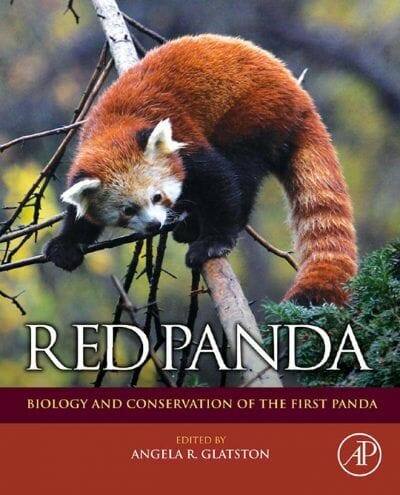


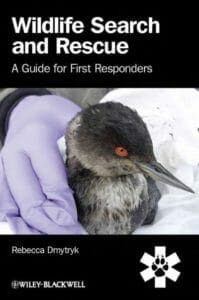
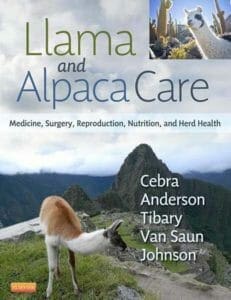


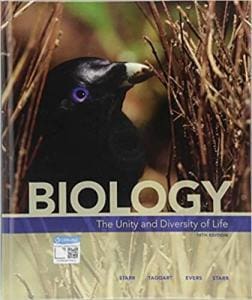
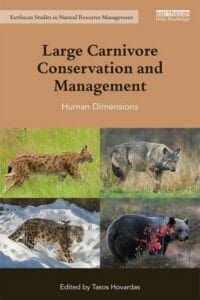
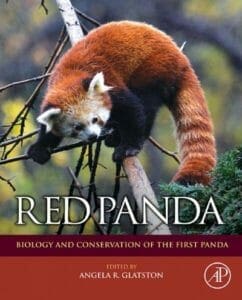




![Ettinger’s Textbook of Veterinary Internal Medicine 9th Edition [PDF+Videos] Ettinger’s Textbook of Veterinary Internal Medicine 9th Edition [True PDF+Videos]](https://www.vet-ebooks.com/wp-content/uploads/2024/10/ettingers-textbook-of-veterinary-internal-medicine-9th-edition-100x70.jpg)

![Textbook of Veterinary Diagnostic Radiology 8th Edition [PDF+Videos+Quizzes] Thrall’s Textbook of Veterinary Diagnostic Radiology, 8th edition PDF](https://www.vet-ebooks.com/wp-content/uploads/2019/09/textbook-of-veterinary-diagnostic-radiology-8th-edition-100x70.jpg)






